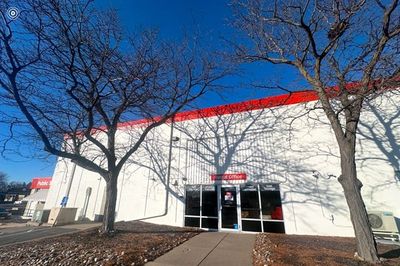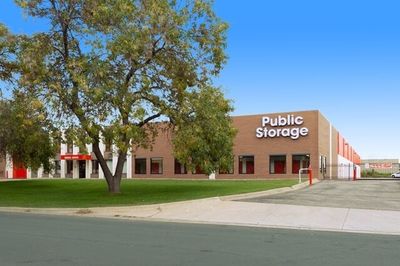Storage Types in Bloomington
- Boat Storage Units in Bloomington, MN
- Businesss Storage Units in Bloomington, MN
- Vehicle Storage Units in Bloomington, MN
- Climate Controlled Storage Units in Bloomington, MN
- RV Storage Units in Bloomington, MN
Other Storage Unit Options in Bloomington, MN
Storage Unit Sizes in Bloomington
- 5x5 Storage Units in Bloomington, MN
- 5x10 Storage Units in Bloomington, MN
- 5x15 Storage Units in Bloomington, MN
- 10x10 Storage Units in Bloomington, MN
- 10x15 Storage Units in Bloomington, MN
- 10x20 Storage Units in Bloomington, MN
- 10x25 Storage Units in Bloomington, MN
- 10x30 Storage Units in Bloomington, MN
About Bloomington
Bloomington is one of Minnesota's largest cities, located on the northern banks of the Minnesota River. Many new residents are attracted to the city because of its booming job market, diverse amenities and thriving arts and cultural scene. Bloomington is perhaps best known as the home of the world-famous Mall of America, the country's largest enclosed shopping mall.
This once-quiet city is now leading the boom in the Twin Cities' inner-ring suburbs, topping suburban growth thanks to its affordable homes, convenient location and attractive residential communities.
The History of Bloomington
In 1843, Peter and Louisa Quinn were the first European settlers in the area. The Quinn family built a cabin near modern-day 10th Avenue Circle and taught government farming practices to the local Dakota tribe. By 1851, more settlers began to move in and the first public school was organized in 1855. During this time, the local economy was largely based in flour milling, farming and blacksmithing. The settlers named the community Bloomington after their hometown of Bloomington, Illinois.
By 1900, the town's population had reached 1,000, and amenities like improved schooling, telephone service and school bus transportation became a part of everyday life. Thanks to the post-World War II housing boom, Bloomington flourished during the 1940s and '50s. By 1960, the population had increased to more than 50,000. The second half of the 20th century saw much continued growth in the city, including residential, commercial and industrial expansion.
Living in Bloomington
Thanks to the city's status as home to a large number of employers, countless people have flocked to Bloomington over the years for better job opportunities. Plus, as a suburb of the Twin Cities, Bloomington tends to attract residents who commute to Minneapolis or St. Paul for work. The city also benefits from its proximity to the Minneapolis-St. Paul International Airport and other major transportation routes.
Today, the city's major industries consist of computer manufacturing, retail, hotel and restaurants, health maintenance and entertainment. Mall of America, the country's largest enclosed shopping center, requires so many employees that Bloomington boasts more jobs per capita than either St. Paul or Minneapolis, making it a great place to live and work. The shops and restaurants at the mall alone provide several thousand jobs, in addition to the several thousand jobs supplied by the local school district, health care company Health Partners, SeaGate Technology and the Donaldson Co.
Bloomington Schools
Bloomington Public Schools is the city's primary public school district. It's known for its award-winning facilities and staff coupled with a strong emphasis on early learning. You can also find several private and charter schools in the area, with one of the largest being Seven Hills Classical Academy.
Resources for Moving to Bloomington
Here's some basic information about Bloomington that can help you get settled in your new home:
- Utilities: The city manages its own water and sewer services, while its electricity is sourced from Xcel Energy.
- Garbage and Recycling: All waste, including trash, recyclables, yard waste and bulky items, is collected on the same day, once per week.
- Transportation: The METRO is the area's light rail line, connecting to many major points in Bloomington as well as surrounding cities. An alternative option is the city's network of fixed bus routes.
Bloomington Housing
The Bloomington suburb consists of several residential districts, many of which either are currently undergoing redevelopment or have been recently revitalized. The South Loop District, for example, is a trendy neighborhood that has an urban feel but is also close to the quiet Minnesota Valley National Wildlife Refuge. Housing costs are generally lower than those in Minneapolis and St. Paul, while rental prices are on par with those in other urban areas.




